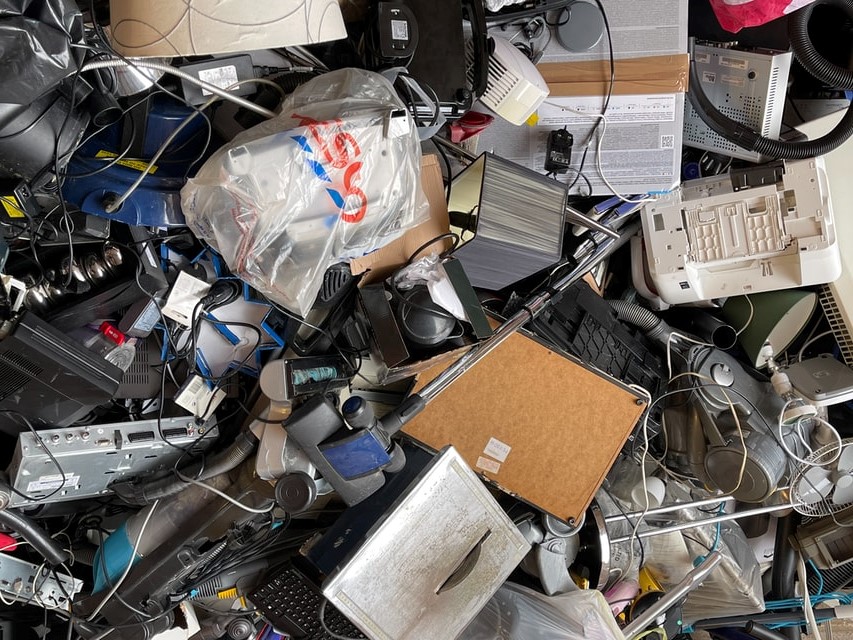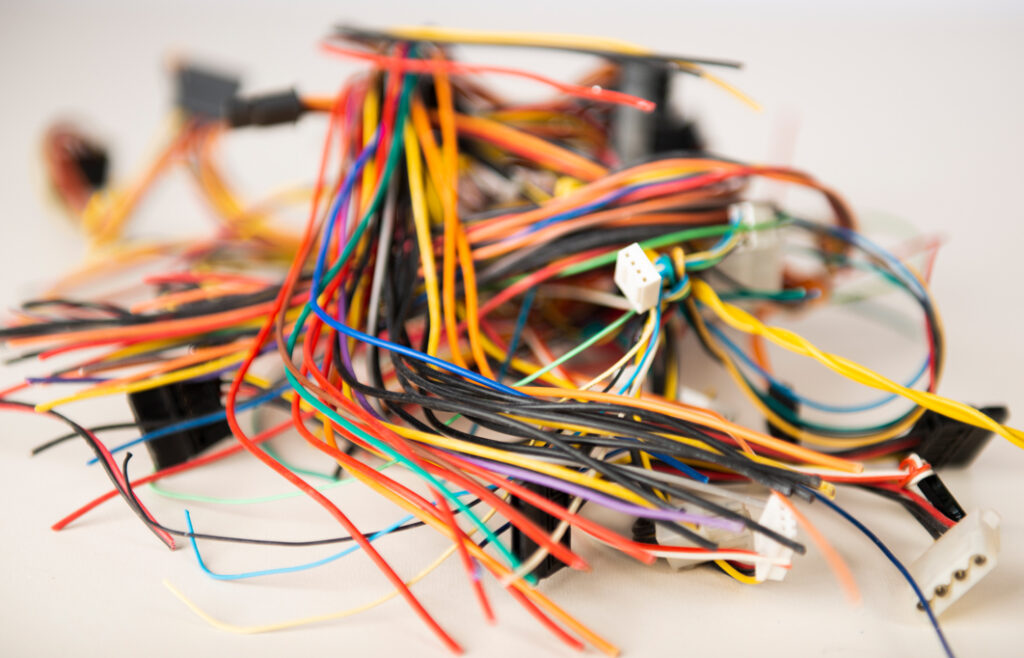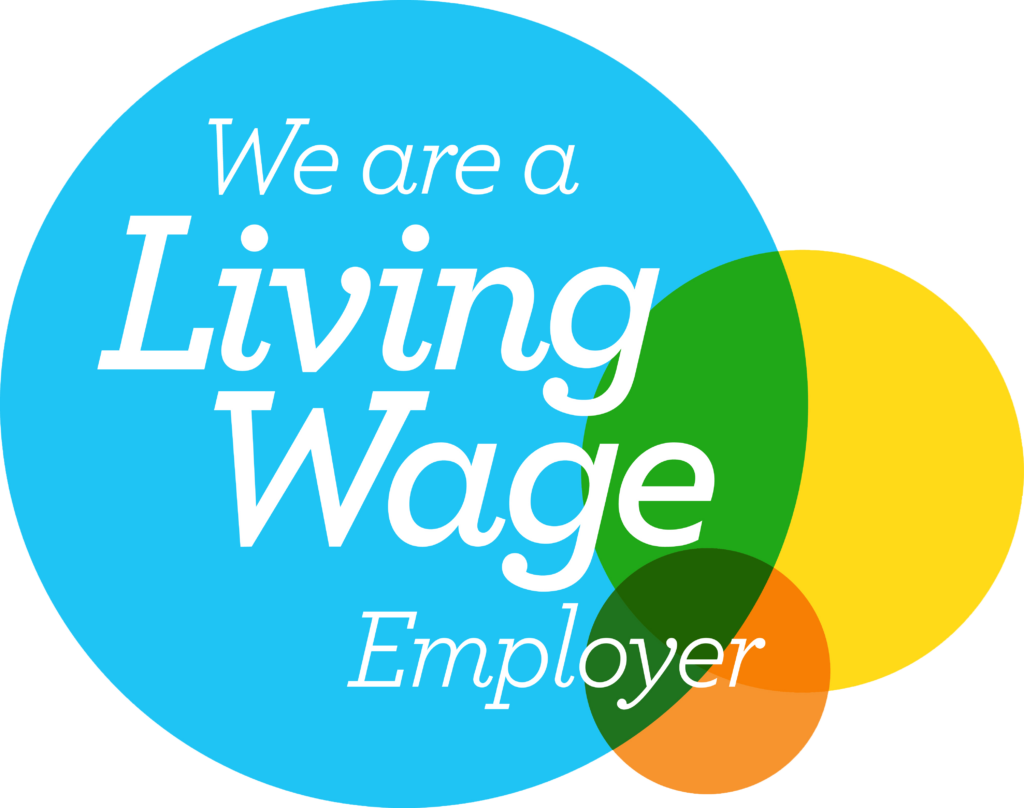BLOG
What Happens to Household Waste Electrical and Electronic Equipment ?

Recycling Household Waste Electrical and Electronic Equipment
DEFRA have recently announced a challenging new target for collection and recycling rates for 2022 – with the expectation that 511,377 tonnes of waste household electronic and electrical items will be collected for recycling through retailer/producer take back schemes, household recycling and producer compliance schemes.
The new targets are higher than last year, despite the 2021 targets being missed by 13,000 tonnes. In 2021, the target for collection was 503,629 but only 97% of this (490,541 tonnes) was collected. This means that in 2022, the target will be 20,836 tonnes more than was collected in 2021.
The target for recycling WEEE has in fact been missed for five consecutive years, but despite this, the target for 2022 has been set at over 20,800 tonnes more than the amount actually recycled in 2021. Inability for retailers to carry out take-back schemes during lockdowns and the temporary closure of household recycling sites has been blamed for lower rates in 2020. The new targets reflect DEFRA’s aim to lift recycling quantities, in particular small household items, back to pre-pandemic levels.
There is a duty to dispose of WEEE correctly – through household recycling sites, retail take-back schemes, and there’s an obligation on producers to finance a portion of the producer collection target each year. Most producers and retailers do this through a Producer Compliance Scheme.
Producers and compliance schemes have called the new targets challenging (mrw.co.uk)– with the amount that producer compliance schemes need to recycle on behalf of their members increasing by 4% from 2021’s target.
Targets were exceeded in several of the WEEE categories (see below for categories) – cooling appliances containing refrigerants; display equipment and medical devices – but other areas such as consumer equipment; small household appliances and electrical and electronic tools, fell short.
What exactly is WEEE and why does it need to be treated specially?
WEEE is any waste electronic or electrical item, either that found in the household or in a commercial or industrial setting.
Household WEEE includes everything from washing machines; fluorescent light tubes; small household electricals like hairdryers; computer equipment; chargers and toys. There are 14 categories of household WEEE.
| Category | Example | |
| 1 | Large household appliances | Cooker, washing machine |
| 2 | Small household appliances | Kettle, hairdryer |
| 3 | IT and telecommunications equipment | Laptop, mobile phone |
| 4 | Consumer equipment | TV, speakers |
| 5 | Lighting equipment | Fluorescent tubes |
| 6 | Electrical and electronic tools | Power tools, drills, screwdrivers |
| 7 | Toys, leisure and sports equipment | Games consoles, electric exercise equipment |
| 8 | Medical devices | Dialysis machines |
| 9 | Monitoring and control instruments | Thermostats |
| 10 | Automatic dispensers | Hot drinks dispensers |
| 11 | Display equipment | Computer screens |
| 12 | Cooling appliances | Fridges and freezers |
| 13 | Gas discharge lamps and LED light sources | LED lamps |
| 14 | Photovoltaic panels | Solar panels |
As these types of items are often made up of several different materials, such as metal glass, and plastics, they are tricky to recycle. Many items are hazardous due to the chemicals present, for example, coolants which are present in fridges and freezers, or mercury in some lightbulbs. These could be particularly harmful if they leak or are thrown in landfill, as they do not break down, and are harmful to human and environmental health.
Because of this, most items of WEEE are also classified as POPs waste (Persistent Organic Pollutants). POPs waste is that which contains chemicals that could be potentially harmful, including plastic casings, printed circuit boards, microwaves, flame retardants and cables. This means that a lot of WEEE items need to be specifically treated and cannot as easily be recycled or added to landfill.
How is it recycled?
WEEE is recycled at specific plants, and how it is recycled or disposed of depends on the category of the item. In particular, POPs items will need to be disassembled and each component treated separately. Other items are shredded in industrial-size machines, with any hazardous components removed before shredding.
How much WEEE is recycled?
It is estimated that around 60% of household and commercial WEEE is recycled or reused.
In tonnes, in 2021 this has equated to 490,541.

Why are targets set?
Targets are set to make sure that as much WEEE is reused or recycled as possible, in an environmentally sound manner. Schemes such as take-back schemes for households (when you buy a new appliance, the company takes back your old one for recycling) are in place to make it as simple as possible for households to recycle their electronics.
It’s estimated that 527 million waste small electrical items, weighing around 190,000 tonnes is being hoarded in households – for example items that have been purchased but are now defunct, because either a suitable scheme does not exist, or people don’t know how to recycle it (letsrecycle.com).
Some retailers, for example Curry’s, offer cash incentives for people bringing electronics back into their store when they replace items.
| Category | 2021 Target (tonnes) | 2021 Actual | 2022 Target | |
| 1 | Large household appliances | 187,398 | 182,635 | 183,867 |
| 2 | Small household appliances | 34,512 | 31,384 | 34,984 |
| 3 | IT and telecommunications equipment | 41,391 | 36,671 | 41,391 |
| 4 | Consumer equipment | 24,386 | 20,914 | 23,134 |
| 5 | Lighting equipment | 5,747 | 5,250 | 5,992 |
| 6 | Electrical and electronic tools | 24,892 | 22,740 | 25,263 |
| 7 | Toys, leisure and sports equipment | 5,013 | 4,539 | 5,067 |
| 8 | Medical devices | 5 | 11 | 18 |
| 9 | Monitoring and control instruments | 1,110 | 1,105 | 1,278 |
| 10 | Automatic dispensers | 0 | 0 | 3 |
| 11 | Display equipment | 37,726 | 39,705 | 39,705 |
| 12 | Cooling appliances | 137,030 | 141,309 | 146,275 |
| 13 | Gas discharge lamps and LED light sources | 4,145 | 4,024 | 4,145 |
| 14 | Photovoltaic panels | 274 | 254 | 254 |
| TOTAL | 503,629 | 490,541 | 511,377 |
What is a Producer Compliance Scheme?
Waste from household electrical goods is recycled through Producer Compliance Schemes (PCS). A compliance scheme collects and recycles (or sends for recycling) waste electronic goods on behalf of their members (producers or retailers of electronic and electric goods). The scheme takes on the producers obligations to collect, dispose of and manage
Producers are obligated to sign up to be part of a scheme if they place over 5 tonnes of electrical and electronic equipment on the market annually. The PCS will then take on the obligations of the producer in terms of collection, treatment and disposal of household WEEE in an environmentally sound way. Producers are effectively paying the scheme to manage their compliance with recycling targets and regulations.
If targets are not met, producers need to make financial contributions to make up for any shortfall. This means that everyone has an incentive to ensure that as much WEEE is recycled as possible.
What is a Producer and what are their obligations?
You’re a producer of EEE in the UK if you:
- manufacture and sell EEE under your own brand in the UK
- resell equipment made by someone else under your own brand (if the maker’s brand appears on the equipment they are the producer)
- import EEE on a commercial basis into the UK
- are established outside of the UK and supply EEE directly to the UK market by distance selling (for example online, mail order, by phone)
(source: gov.uk)
If you meet these criteria and place more than 5 tonnes of EEE on the market each year, you must register with a Producer Compliance Scheme. Smaller producers can register as a small producer. There are other obligations that you need to meet, click here to read the Environment Agency’s guidelines.
What if I am a retailer, not a producer?
If you retail household goods, you must provide a free take-back scheme, which needs to be published and clearly visible to your customers, whether online or in-store. You will need to outline how your offer works, including how any waste you collect will be dealt with. Find out more about retailer obligations here.
Need more help?
Contact our team for support in getting rid of your business WEEE.




